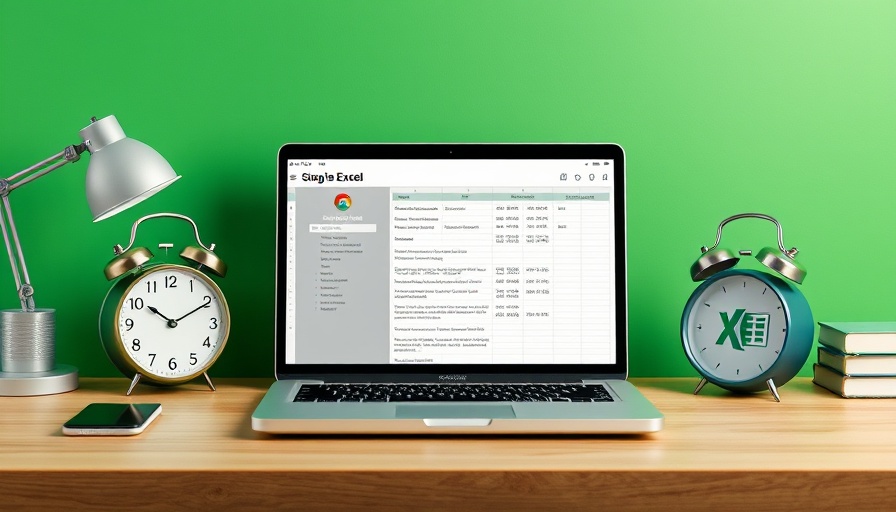
Unlocking Efficiency: The Power of Excel Functions
In today's fast-paced world, digital nomads must optimize their time and resources. Microsoft Excel, a staple tool in remote work environments, can either be a lifeline or a time sink. If you’re still clinging to outdated methods and numerous formulas, it’s time for a productivity upgrade. Three powerful Excel functions drastically changed how I handle data and saved me countless hours—functions that everyone, especially those in the agile workforce, can benefit from.
XLOOKUP: Your New Best Friend in Excel
The days of wrestling with VLOOKUP’s column counting and directional limitations are behind us. Enter XLOOKUP, the modern successor designed to simplify your searching dilemmas. Forget about dependencies on column indices and rearranging sheets; XLOOKUP transforms the way you retrieve data from your spreadsheets.
For example, the formula =XLOOKUP(O2,I2:I200,L2:L200) allows you to effortlessly search for a specific value (the value in cell O2) and get results from the designated array of your choice (like sales data from L2 to L200). Plus, if there's no match, you can return a friendly message rather than the dreaded #N/A error. This function even accommodates searches from the bottom up—perfect for those cases when you may encounter multiple entries for similar values.
Conditional Calculations Made Simple with SUMIFS and COUNTIFS
Digging through data manually is time-consuming, especially when you're faced with specific queries like, "How much did we sell in Asia for products over $150?" Instead of filtering data repeatedly, you can harness the power of SUMIFS and COUNTIFS. These functions allow you to apply multiple conditions to your data and achieve results quickly, making your reporting tasks significantly easier.
With SUMIFS, you can calculate total sales under specific conditions—imagine pulling the relevant figures without ever touching a filter. For instance, if you want to know sales in a particular region for products above a certain price, your calculation would look like this: =SUMIFS(SalesRange, RegionRange, "Asia", PriceRange, ">150"). If you need to count entries instead, just opt for COUNTIFS instead, and watch your data generate results in real time.
Data Handling without the Headache
By integrating these three functions into your daily workflow, you’ll eliminate repetitive tasks that stifle productivity. No more fiddling with cumbersome formulas or filtering through endless rows of data. This time-saving adaptability is invaluable for digital nomads who thrive on efficiency and innovation.
Future Opportunities with Excel
As Excel continues to evolve, staying updated on new functions will be crucial. With Microsoft regularly rolling out features, functions like XLOOKUP promise to become staples in data analysis. Leveraging these tools will not only enhance your productivity but also improve your analytical skills, making you a more valuable asset in collaborative remote environments.
Whether you're piecing together a budget or conducting financial analyses for clients, becoming adept at these functions will also enhance your reputation as a serious data handler. You'll feel the difference in efficiency, freeing up more time for creative thinking and problem-solving.
Take the Next Step in Your Productivity Journey
If you’re ready to elevate your Excel game, start integrating XLOOKUP, SUMIFS, and COUNTIFS into your workflows today. Master these three functions, and you'll not only streamline your processes but also gain a competitive edge in your field. The digital nomad lifestyle supports flexibility, so why let cumbersome tools hold you back? Embrace efficiency and watch your productivity soar.
For more tips on maximizing tools essential for digital nomads, explore resources that dive deeper into Excel's capabilities and other productivity tools. Start working smarter not harder!
 Add Row
Add Row  Add
Add 




Write A Comment